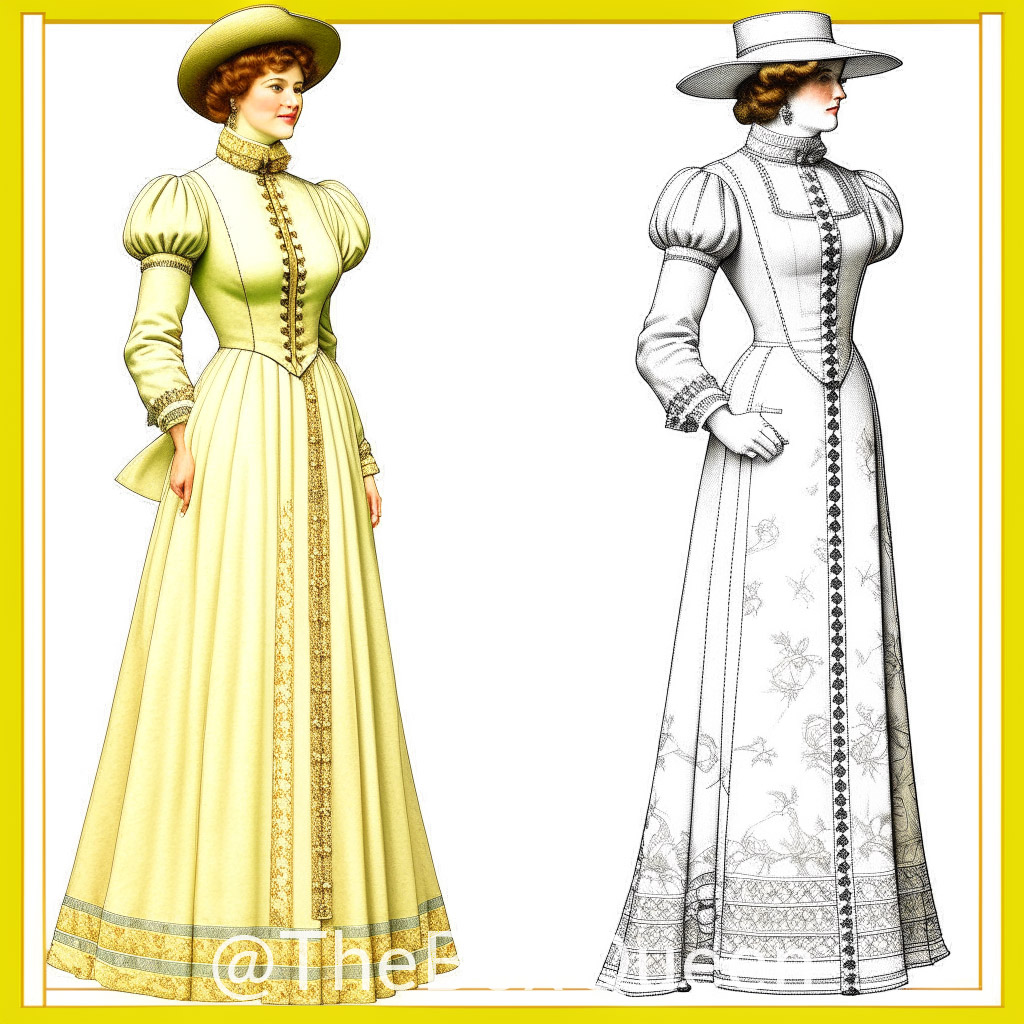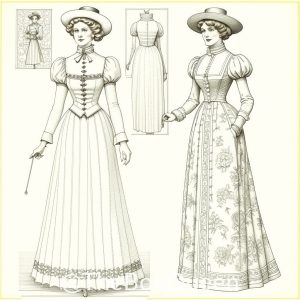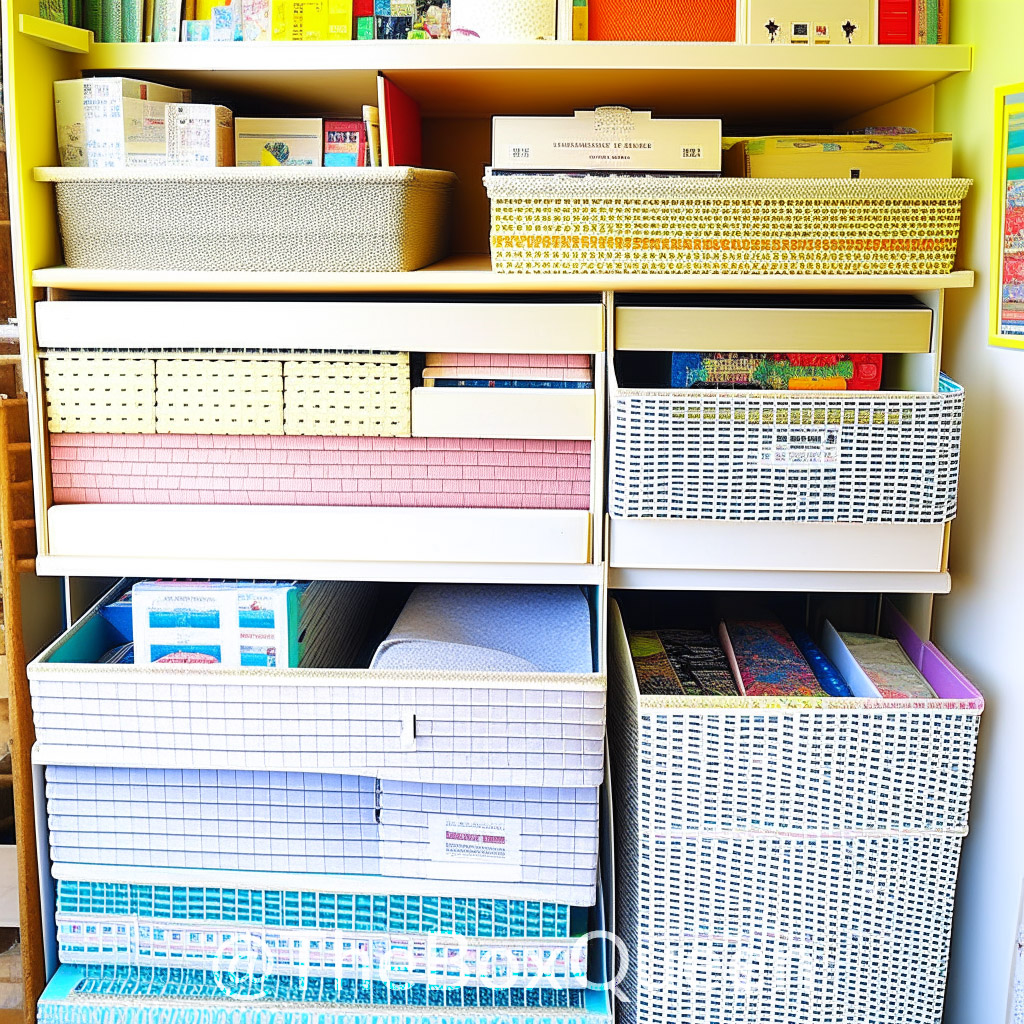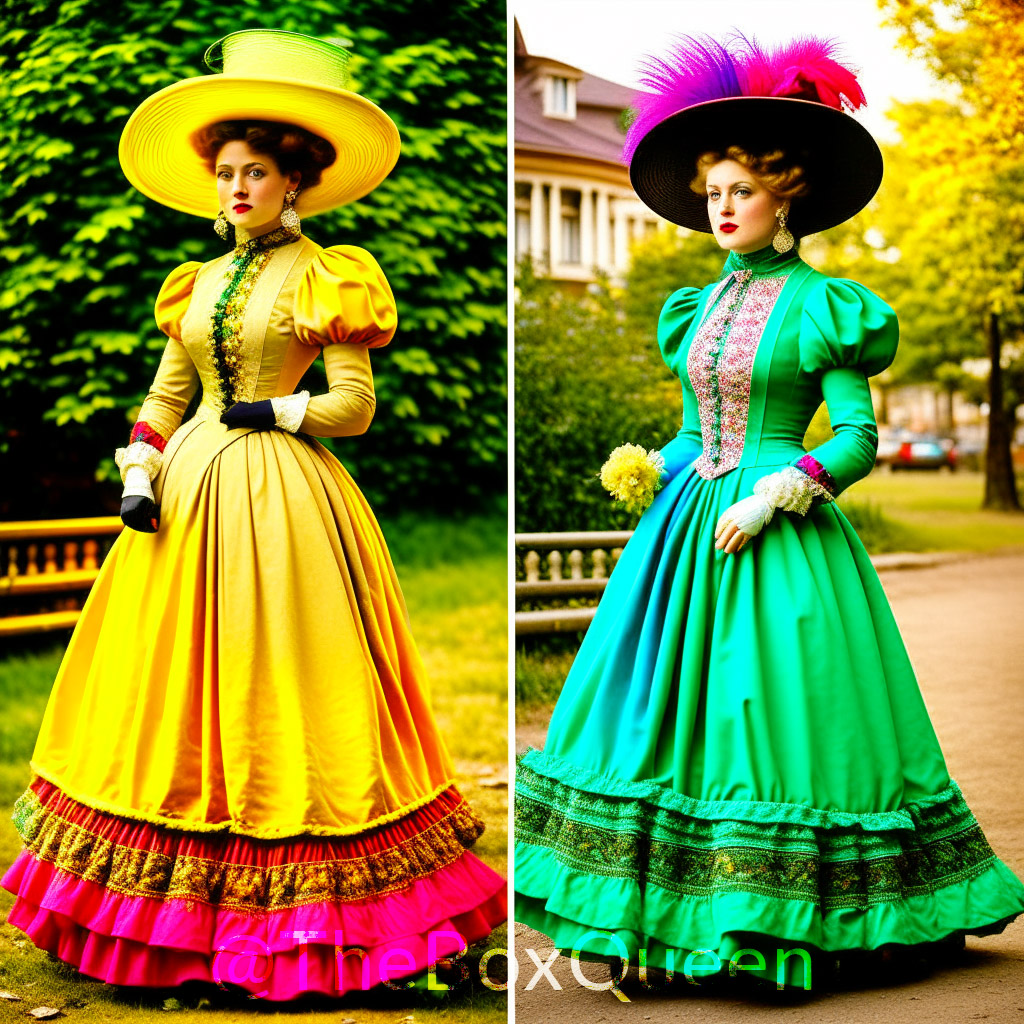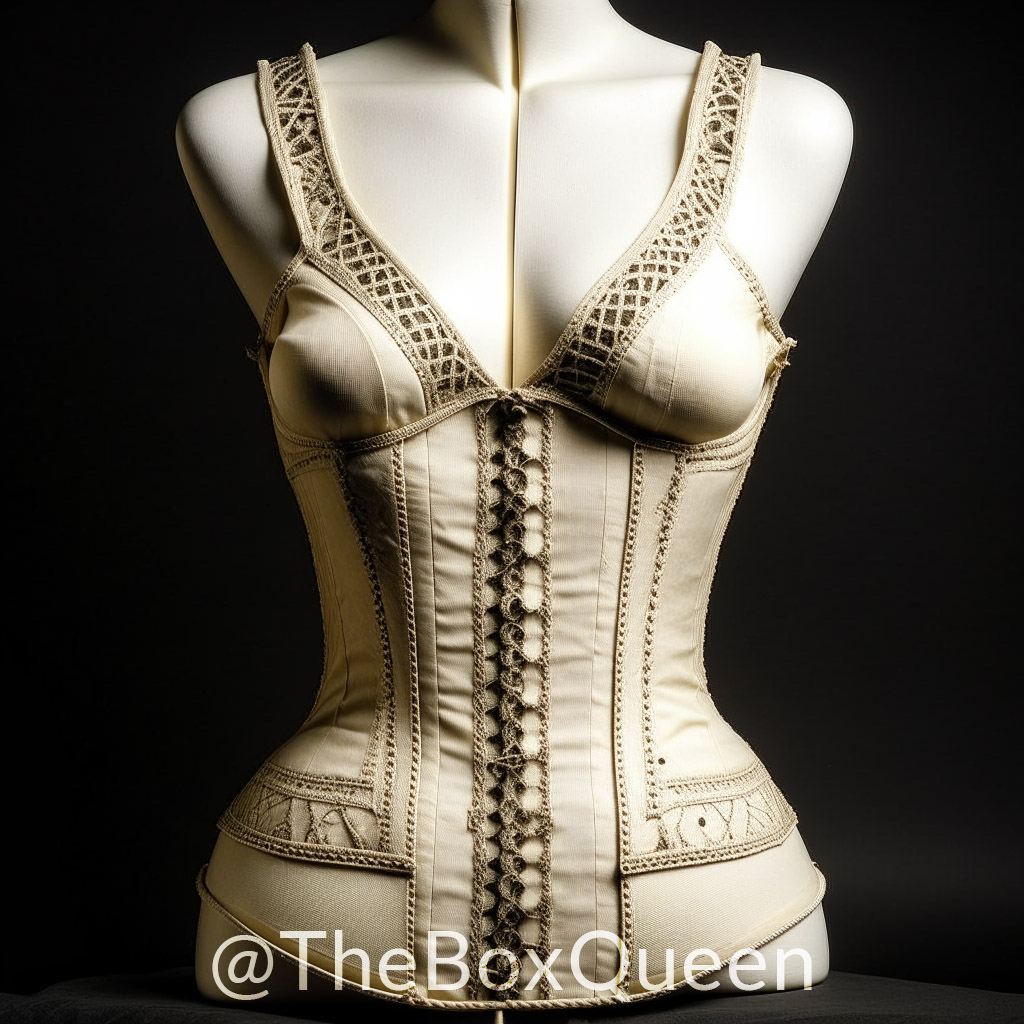Edwardian Dress Patterns: Unleashing Timeless Elegance
Introduction
Welcome to our in-depth article on Edwardian dress patterns, where we delve into the fascinating world of early 20th-century fashion. We shall examine the alluring aesthetics, elaborate patterns, and timeless beauty of Edwardian-era clothing in this essay. This article is perfect for you if you have a strong interest in antique clothing or are just fascinated by the grace of a bygone era Check Out Our Recommended One.
The Allure of the Edwardian Era
The King Edward VII-inspired Edwardian era, which lasted from 1901 to 1910, was so titled. Fashion during this time period underwent a tremendous change, moving away from the constrictive corsets and bustles of the Victorian era. With a focus on slim lines and elaborate embellishments, Edwardian design adopted a more organic shape. The attire of the era radiated sophistication, femininity, and a hint of romanticism.
Fashion served as a means of displaying social rank and class during the Edwardian era. Compared to earlier times, women’s clothing grew more loose-fitting and cosy. The emphasis changed to softer, flowing materials and subtle accents that emphasised the wearer’s elegance and delicacy.
Exquisite Fabrics and Embellishments
A variety of opulent materials, including silk, satin, chiffon, and lace, were used to make Edwardian dresses. These lavish materials gave the clothing a lovely flow and movement in addition to enhancing its luxury. The dresses frequently had charming decorations like delicate lace overlays, detailed needlework, and beaded accents.
For Edwardian dresses, silk was a particularly popular fabric due to its shiny appearance and light, breathable quality. It was frequently used to evening gowns to produce an exquisite and ethereal impression. Satin was also favoured because of its silky feel and capacity to draw attention to the body’s inherent curves.
In the Edwardian era, lace was often used to embellish collars, cuffs, and hems. Chantilly lace was highly sought after because of its delicate flower patterns. The dresses were further refined by hand embroidery, which was frequently used. The fabric was skillfully sewn with intricate designs and motifs to display the craftsmanship of the time.
Silhouettes and Styles
- S-Shaped Silhouette
The S-shaped form was one of the distinctive features of Edwardian dress designs. An hourglass form with a small waist and a big bosom was the ideal shape at the time. Women wore corsets that emphasised their body contours to create this silhouette. The gowns themselves had long bodices, high collars, and flowing skirts, giving them an attractive and lean appearance.
The Edwardian era’s corsets were created to mould and shape the body, offering support and accentuating the intended silhouette. They were often knotted tightly to tighten the waist and composed of sturdy yet flexible materials like whalebone or steel. The end product was a lovely curvature that accentuated the feminine form’s inherent attractiveness.
- Tea Gowns
Tea gowns were adaptable clothing items that could be worn for both casual social engagements and at home during the Edwardian era. These gowns often featured delicate flower motifs and were constructed from lightweight materials like cotton or silk. Tea gowns had easy, flowing lines and frequently had high waists and modestly puffed sleeves, making for a casual, comfortable look.
Because the outfit was appropriate for afternoon tea parties where women could flaunt their stylish yet casual dress, the moniker “tea gown” was born. Tea gowns were comfortable to move in and frequently had elaborate lace or ribbon accents. They provided a sense of flexibility and informal elegance as a contrast to the more structured and formal garments of the era.
- Evening Gowns
The height of elegance and sophistication were found in Edwardian evening gowns. These lavish outfits were constructed from pricey materials and embellished with exquisite beading, lace, and embroidery for formal occasions. The gowns’ floor-length skirts, high necklines, and long sleeves exuded a sophisticated elegance that continues to enthral fashion fans today.
The elegance and attention to detail of Edwardian era evening dresses were legendary. They frequently featured grand draperies, layers of delicate materials, and dramatic trains. Long and fitting sleeves or flowing, sheer components that provided an air of ethereal beauty were both possible options for the sleeves. The bodices were frequently embellished with dexterous beadwork or embroidery, making a spectacular visual statement.
Sewing Your Own Edwardian Dress
Sewing an Edwardian dress can be a satisfying and rewarding project whether you are an avid sewer or simply enjoy making your own clothes. You’ll need a dependable Edwardian dress design to get started. Many businesses that specialise in vintage-inspired patterns provide magnificent Edwardian designs that maintain the period’s elegance. Original Edwardian dress patterns are also available at specialised vintage stores and internet auctions.
Gather the required materials, such as your preferred fabric, matching threads, and any desired embellishments, after you have your pattern. To create a genuine Edwardian design, pay close attention to detail when cutting and assembling the parts. To achieve a proper fit, keep in mind to carefully follow the directions and make any necessary changes.
Build the dress’ bodice before you start stitching. Here is where the elaborate ornamentation and decorations are used. As directed by the design, sew the darts, fasten the sleeves, and carefully add any lace or embroidery. Finish the bodice before beginning the skirt. To produce the necessary fullness and flow, pay close attention to the techniques for gathering and pleating.
The final details are crucial to consider when making an Edwardian dress. Hand-sew the snaps, hooks, or buttons to make a lovely closure that matches the style of the garment. Last but not least, finish pressing the dress and hem the skirt to make it ready to wear.
Conclusion
In conclusion, Edwardian clothing styles exemplify the timelessness of sophistication and elegance. These clothes are alluring not just because of their elaborate patterns and luxurious fabrics, but also because of the tales they share about a fascinating time in fashion history. Exploring the world of Edwardian gowns brings up a dimension of beauty and inspiration, regardless of whether you are a vintage fashion fanatic or just enjoy the grace of the past.
